During our mid-August vacation in the Rockies, we went for an early morning jaunt up the path to the lookout for Peyto Lake along the Icefields Parkway. (Well, ok, I wheezed and moaned my way up the path, and breezed and smiled my way down.) It was an overcast, cold morning and we were glad we wore layers. The lake wasn’t the only thing worth looking at though as the hillside sported many wildflowers and fungi and even some Ptarmigan—or maybe Grouse?
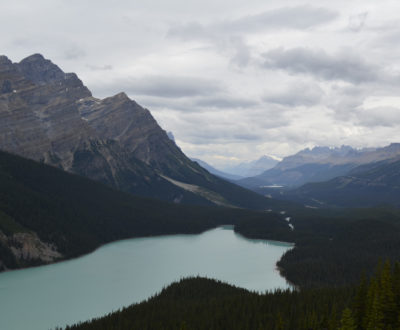
Mountain Showers Bring Forth Magical Mushrooms
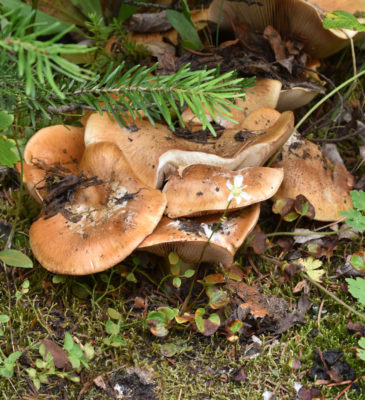
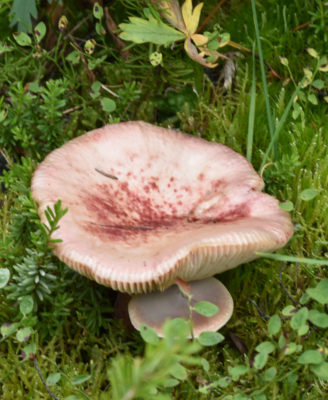
This summer of 2016 has been a wet one in the mountains. That was great for us as it meant the wildfire risk was low and the views were unobscured by smoke. It also resulted in a bumper crop of mushrooms. Given the cold temps, we only took a few photos but we admired many different shapes and colours.

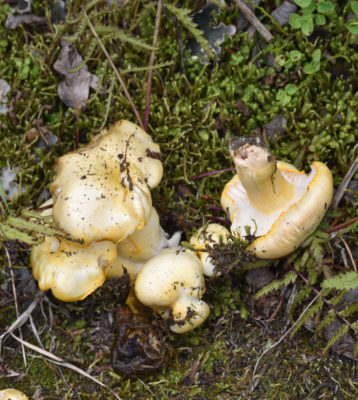
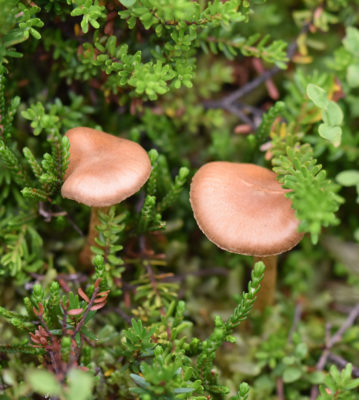
Although these are a different kind and colour, these mushrooms reminded me of the cover of a Freeman Patterson book, so I took their picture.
Look! A Mountain Chipmunk! Or Not.
Gosh! A Golden-mantled Ground Squirrel!
I spent a bit of time on the trip looking for chipmunks. A field guide to the mammals of Canada had advised me that there were four types of chipmunks I might see on our adventure: the regular Eastern Chipmunk who amuses us at home, the Least Chipmunk who should seem rather small, Red-tailed Chipmunks and Yellow-Pine Chipmunks. I knew that my best bet would be to try for a photo of any chipmunk we met and then try to figure out what type it was later at home.
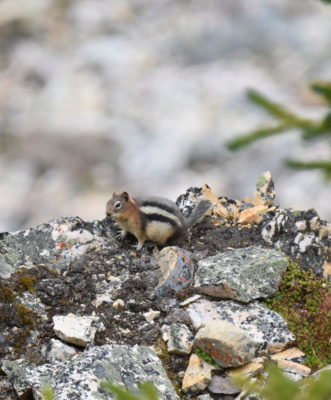
So I was very excited when this “chipmunk” running across the boulders near the Peyto Lake look off stopped and posed for a split second. As the shutter clicked, though, so did my mind: pudgy rounded body, white circle around the eye. This was not a chipmunk at all. It was a Golden-mantled Ground Squirrel. Still, it was nice to see a mammal that was not taking Selfies at the lookout.
Sub-Alpine Flowers Valiantly Bloom On Into Mid – August Along the Peyto Lake Trail
I was pleased to see some wildflowers still blooming despite the obvious approach of autumn. I took photos most of the way down the path because I wasn’t too sure I’d get another chance later in the trip. And I’m glad I did because at many places we visited later the flowers were finished for the year.
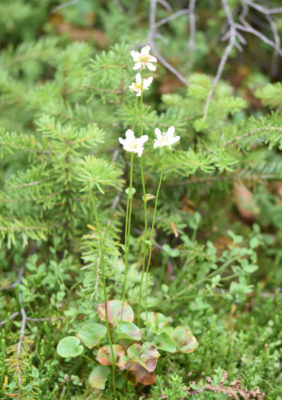
Fringed Grass of Parnassus at Peyto Lake, Alberta
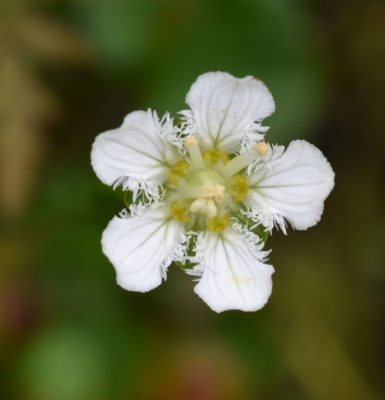
These white flowers were in full bloom all along the trail. Most of them had small dark flying insects visiting them. I liked the frilly edges to the petals. Each blossom was on its own long almost bare stalk; There was usually one quite small roundish leaf clasping the stalk. The rest of the leaves were at the bottom of the plant probably to help protect the plant during the harsh weather. A scout around the internet suggests these are Fringed or Cascade Grass of Parnassus, a native wildflower. (This is not the same plant as the Grass of Parnassus found in south-western Ontario.) As Audubon points out, this plant does not look like a grass; it’s more like a saxifrage.
Western Pasque Flower at Peyto Lake, Alberta
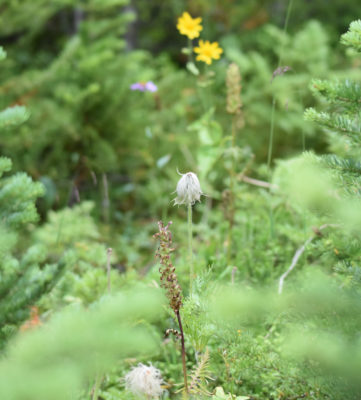
These wooly seedheads are probably from Western Pasque Flower or Western Anemone.
Triangular-leaved Ragwort at Peyto Lake, Alberta
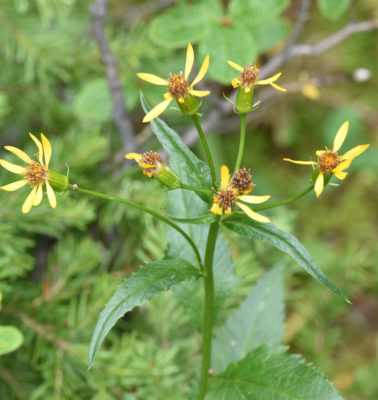
This may be Triangular-leaved Ragwort but the various references I checked warned me that there are many different but similar looking Ragworts in the mountains.
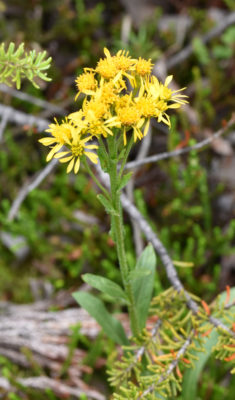
This is a different yellow wildflower. It had long, fuzzy oval leaves, not sharp shiny triangular ones.
Sitka Valerian at Peyto Lake, Alberta
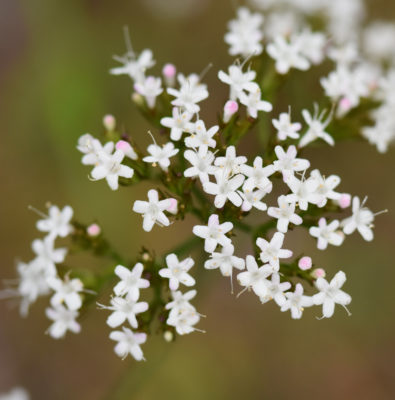
I hope I’m remembering this plant correctly from a nature course I took in Alberta in the 1980s. If so, it’s Valerian, called Sitka Valerian in some books. The Valerian was very popular with the bees and pollinators.
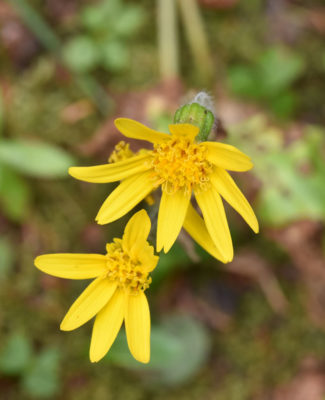
I had hoped to identify these wildflowers but I haven’t succeeded yet. I think I need a field guide specifically for the flowers in the Canadian Rockies. Maybe I’ll be able to add names to them in the future. (If you’re sure of a name, please leave a comment, thanks!)
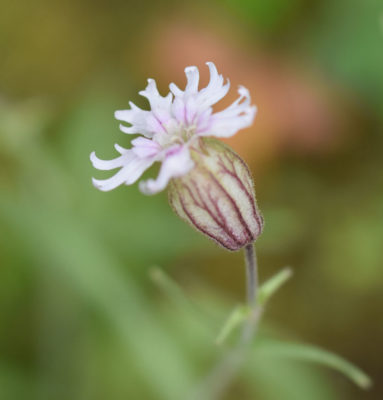
This flower reminds me of white campion but the petals are different.
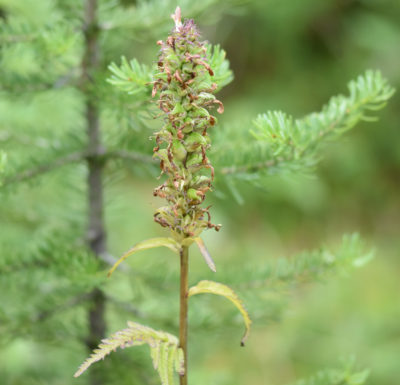
Some flowers with seed heads like these are Louseworts but there are other types too.
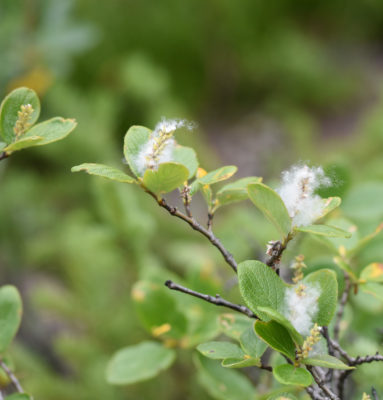
Even the shrubs confused me. These ones had lovely puffs of fuzz on them.
Look! A Ptarmigan! Or Not
Spiffy! A Couple of Spruce Grouse!
Near the end of the trail on the way down, I spotted a photographer stalking and shooting into the spruces. Always game to see what someone else had found, I followed the line of his lens and saw a lovely fat pudgy wild chicken. It was walking briskly away from him and all I could see clearly was a few spots of white on the tail. So, being easily led astray by the names of birds, I believed it to be a White-tailed Ptarmigan.
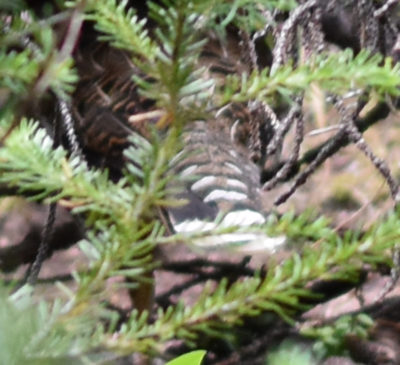
After that photographer moved on, I took over. I tried for some photos of the retreating bird but it was more or less lost among the fallen trees and tall wildflowers. Then I looked a few inches further to my right and realized a second bird was perched out in the open on a fallen log, watching me with calm curiousity.
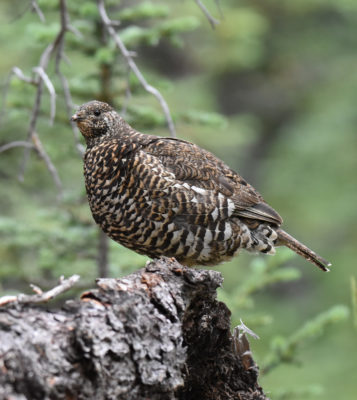
After struggling to get my camera to focus, I finally snapped a few photos of it. As I did, I began to wonder if these really were Ptarmigan. Especially since this one had no white on the tail at all. Later, when I looked at photos online and in books, I decided both of my birds had been Spruce Grouse.
Needless to say, I was very very happy to encounter these two birds. I wasn’t sure what else we might see as we continued up the Icefields Parkway but it no longer mattered that much: the day had already become a wild success.
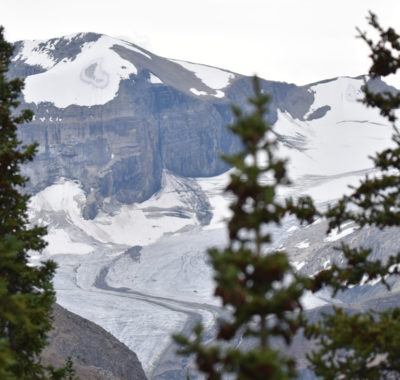
View of the source of water for Peyto Lake
Related Reading
- Small Mammals of Waterton National Park
- Checklist of Mammals in Banff National Park
- Wild Flowers Banff Jasper Kootenay Yoho National Parks
- Rocky Mountain Wildflowers
- Horseshoe Canyon in the Alberta Badlands Hosts Mountain Bluebirds and Richardson’s Ground Squirrels
Join In
Have you hiked the short trail to the Peyto Lake lookout? Did you see any interesting wildlife or wild flowers? Judging by the signage there are some amazing flowers here earlier in the summer. Please share your memories with a comment.
